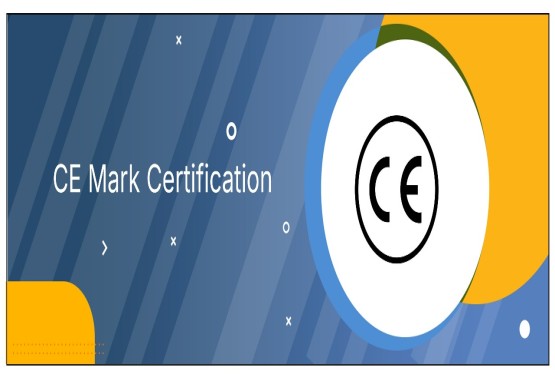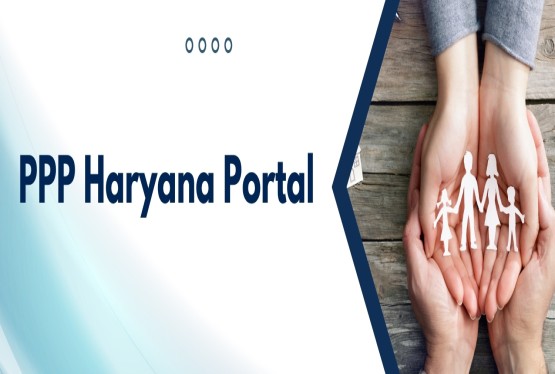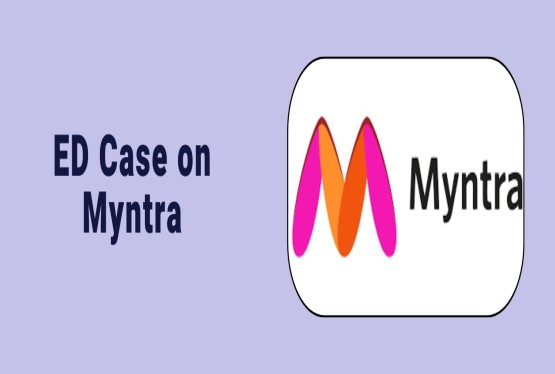The Reserve Bank of India (RBI) has introduced new guidelines under the "New RBI EMI Rules 2025" that will bring significant relief to loan borrowers across India. With effect from 15th June 2025, penal interest on overdue EMIs will be completely abolished. This initiative is being applauded by consumers, financial experts, and policy advocates alike, as it seeks to ensure a more transparent, fair, and supportive financial system. Let us now discuss the rule in detail and explore its wide-ranging impact.
New RBI EMI Rules 2025 – Why?
The New RBI EMI Rules 2025 are aimed at eliminating unfair practices related to late EMI payments. Until now, borrowers who failed to pay their EMIs on time were penalized with additional interest, also known as penal interest. This often added financial burden on individuals already under economic stress. Recognizing the challenges faced by borrowers, the RBI has now instructed banks and NBFCs to remove such penal charges completely.
The core of this rule is to protect consumer rights and promote responsible lending. The rules emphasize empathetic treatment of borrowers and encourage financial institutions to focus on transparency and fairness. These new guidelines will apply uniformly across all kinds of loans, including home loans, personal loans, auto loans, education loans, and more.
Key Features of the New RBI EMI Rules 2025
One of the biggest highlights of the New RBI EMI Rules 2025 is that they apply to all categories of loans. Whether an individual has taken a loan for personal use, business, or buying a vehicle, the rules are consistent across sectors. This uniformity brings much-needed standardization in lending practices.
Another key feature is that the new rules are not just about removing penal interest. The RBI has also asked banks and NBFCs to modify their digital systems and customer service platforms. This will ensure that loan agreements and EMI tracking tools are updated to reflect the new rules.
Moreover, the RBI has clearly shifted its focus from penalizing borrowers to supporting them. Financial institutions are now expected to work closely with borrowers facing financial difficulties. This includes offering alternative repayment options or providing grace periods in case of genuine issues.
Impact of the New RBI EMI Rules 2025 on Borrowers
The New RBI EMI Rules 2025 have a direct and positive impact on borrowers. Earlier, if a borrower missed an EMI payment, they had to pay an additional 1.5% to 3% of the overdue amount as penal interest. This often led to a heavy financial burden. Now, with the penal interest removed, borrowers can manage their finances better. This change especially benefits those who do not have regular income sources, such as freelancers, gig economy workers, small traders, and people living in rural areas. Many of these individuals rely on seasonal income, and any delay in payments would previously attract heavy penalties. The new rule offers them relief and financial breathing space.
Borrowers can now approach their loan repayments with greater confidence. While the EMI must still be paid, the absence of penal interest ensures that a short delay does not turn into long-term financial stress.
Loan Penalty Comparison Before and After June 15, 2025
To know the difference better, here's a comparative table showing penalties before and after the implementation of the New RBI EMI Rules 2025:
|
Loan Type |
Penalty Before June 15 |
Penalty After June 15 |
|
Personal Loan |
2% of Overdue Amount |
0% |
|
Home Loan |
1.5% of Overdue Amount |
0% |
|
Auto Loan |
2% of Overdue Amount |
0% |
|
Business Loan |
3% of Overdue Amount |
0% |
|
Education Loan |
1% of Overdue Amount |
0% |
|
Gold Loan |
2.5% of Overdue Amount |
0% |
|
Two-Wheeler Loan |
2% of Overdue Amount |
0% |
|
Consumer Durable Loan |
1.5% of Overdue Amount |
0% |
As seen in the table above, this is a major policy change that brings substantial financial relief for borrowers across all loan categories.
How Banks and NBFCs are Adapting to the RBI Guidelines?
To implement the New RBI EMI Rules 2025, financial institutions are required to make several changes.
-
They need to modify their internal systems to ensure that no penal interest is charged on delayed EMIs. Automated systems used by banks and NBFCs for EMI calculation must be updated.
-
All existing loan agreements need to be revised. These agreements previously included clauses related to late payment penalties. With the new rules, such clauses will be removed or modified, and borrowers must be informed accordingly.
-
Financial institutions must train their staff to understand the new rules. Customer support teams must be able to explain these changes clearly to borrowers and handle related queries. This will ensure smooth communication and help borrowers understand the benefits of the new rule.
-
Banks are expected to enhance their customer support services. The focus will now shift to helping customers avoid defaults rather than punishing them. Timely communication, reminders, and borrower assistance programs may be introduced.
Challenges in Implementing the New EMI Rules
While the New RBI EMI Rules 2025 are in the best interest of borrowers, implementing them may pose challenges for financial institutions.
-
One of the major challenges is system overhaul. Banks and NBFCs use automated tools to calculate penalties and EMI schedules. Updating these systems will require time, investment, and coordination with software vendors.
-
Another challenge is the potential revenue loss for lenders. Penal interest was a significant income source for many institutions. Its removal may impact their short-term profitability. However, the RBI believes that better borrower engagement will lead to improved long-term performance.
-
Staff training and customer awareness are important. Lenders must train employees at all levels and make sure customers are well-informed about their new rights. This will require internal workshops, updated brochures, and better online communication channels.
-
Lenders will also need to develop alternative strategies to ensure timely repayment. Without the fear of penalties, some borrowers may become complacent. Financial institutions must find new ways to encourage disciplined repayment behaviour
-
Long-Term Benefits of New RBI EMI Rules 2025 Despite initial implementation challenges, the New RBI EMI Rules 2025 are expected to bring multiple long-term benefits. For borrowers, the absence of penal charges means less financial pressure. They can plan their monthly budgets better and avoid falling into a debt trap.
-
It is also expected to improve borrower-lender relationships. Financial institutions that treat their customers with empathy and fairness will likely earn long-term trust and loyalty. This will be especially important in a competitive lending environment.
-
The change will also help in reducing defaults. Borrowers who previously delayed payments due to financial stress and penalties will now be more willing to stay regular with repayments.
-
This reform promotes inclusive banking. By supporting people from rural areas, self-employed individuals, and gig economy workers, it strengthens the country’s financial inclusion goals.
-
The policy will also encourage entrepreneurs and business owners to explore formal credit systems. With reduced cost of borrowing, more individuals may opt for business loans or NBFC registrations to start or expand their ventures.
What Borrowers Should Keep in Mind?
Even though penal interest has been abolished, borrowers must not become careless. Loan repayments are still mandatory, and missed EMIs can affect one’s credit score. A low credit score may lead to difficulties in getting loans in the future. Borrowers should use this opportunity to improve their financial discipline. In case of financial difficulties, they should communicate with lenders proactively. Most institutions are now expected to offer support options like grace periods, loan restructuring, or extended tenures. Maintaining a good repayment record will help borrowers in building financial credibility. It also opens doors for better interest rates and credit limits in the future.
How Lenders Can Rebuild Customer Trust?
The New RBI EMI Rules 2025 offer financial institutions a chance to redefine their relationship with customers. Instead of enforcing rigid penalties, they can now focus on borrower engagement. Lenders can introduce programs to educate borrowers about financial management. Customer service teams can be trained to offer empathy-driven support. Regular updates, reminders, and financial literacy programs will go a long way in creating a supportive ecosystem. Also, lenders can explore data-driven models to assess borrower behavior. Instead of relying on penalties, predictive models can be used to identify high-risk borrowers and offer timely support.
Conclusion
The New RBI EMI Rules 2025 represent a significant reform in India’s financial regulatory framework. By abolishing penal interest on delayed EMI payments, the RBI has taken a step towards protecting borrowers from excessive charges and promoting responsible lending. While lenders may face initial challenges in implementing the new rules, the long-term impact is expected to be positive. With better borrower engagement, reduced defaults, and increased trust, the financial system can evolve into a more inclusive and resilient structure.
Borrowers now can manage their finances with less fear and more clarity. Meanwhile, financial institutions are encouraged to adopt a human-centric approach. As the rules come into effect on June 15, 2025, the entire ecosystem—borrowers, lenders, and regulators—stands to benefit.
To stay updated on RBI guidelines and get assistance on registrations and compliance, visit https://www.compliancecalendar.in/. or you can connect through mail at info@ccoffice.in or Call/Whatsapp at +91 9988424211.
FAQs
Q1. What are the New RBI EMI Rules 2025?
Ans. The New RBI EMI Rules 2025, effective from 15th June 2025, abolish penal interest charges on late EMI payments. These rules apply to all types of loans—personal, home, auto, education, and others. The goal is to promote fair lending practices and reduce the financial burden on borrowers who miss their EMI deadlines due to genuine hardships.
Q2. Do the New RBI EMI Rules 2025 apply to all types of loans?
Ans. Yes, the new rules apply uniformly across all loan categories including personal loans, home loans, auto loans, business loans, gold loans, education loans, and consumer durable loans. Financial institutions are required to stop charging penal interest on any overdue EMI irrespective of the loan type.
Q3. Will borrowers still have to pay their EMIs on time?
Ans. Yes, timely EMI payment is still mandatory. While penal interest has been removed, late EMI payments may still impact a borrower’s credit score. Borrowers are encouraged to continue making payments on time to maintain good financial health and creditworthiness.
Q4. What is the difference between penal interest and normal interest?
Ans. Normal interest is the scheduled charge applied on the loan amount as per the agreed rate. Penal interest is an extra charge imposed when a borrower delays or misses EMI payments. Under the New RBI EMI Rules 2025, only penal interest has been abolished; regular interest remains applicable as per the loan agreement.
Q5. How will this rule benefit borrowers financially?
Ans. Borrowers will save money as they are no longer required to pay additional penal charges on delayed EMIs. This reduces the overall cost of borrowing. The change especially benefits people with irregular incomes, such as freelancers and gig workers, by providing more financial flexibility.
Q6. How will banks and NBFCs implement these changes?
Ans. Banks and NBFCs must update their internal systems, revise loan agreements, retrain staff, and enhance customer support channels. They are also responsible for informing existing borrowers about the changes and removing automated penalty calculations from their digital platforms.
Q7. Can a bank still take legal action if a borrower defaults?
Ans. Yes, banks and NBFCs still have the right to initiate recovery proceedings if a borrower defaults entirely on the loan. The removal of penal interest does not mean exemption from loan obligations. Borrowers must repay their loans as per the original terms to avoid legal action or asset seizure.












































































_crop10_thumb.jpg)







_Rules,_2025_learn_crop10_thumb.jpg)
























































































_crop10_thumb.jpg)








 in BIS FMCS_learn_crop10_thumb.jpg)










_crop10_thumb.jpg)















_crop10_thumb.jpg)





_Code C-888_learn_crop10_thumb.jpeg)
_learn_crop10_thumb.jpg)

































































_Certificate_learn_crop10_thumb.jpg)

_Certificate_(1)_crop10_thumb.jpg)














_learn_crop10_thumb.jpg)

_crop10_thumb.jpg)


















_Scheme_learn_crop10_thumb.jpg)


_learn_crop10_thumb.jpg)










